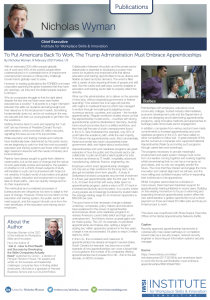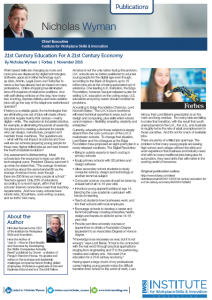
For more than a century, vocational education and training (VET), as career and technical education (CTE) is known as in Australia, has been a core tenet of workforce development for the country’s traditionally and heavily industry-centered economy.
Respected internationally as a leading exponent of integrated and responsive training, Australia’s VET sector has proven its ability to be adaptive and agile in supporting government priorities to establish young people in the workforce, while working with industry to develop future-focused skills training packages. Despite its comparative maturity, the Australian VET sector is tackling many of the same pressures and issues as the United States, including skill shortages, hesitant employers, digital disruption pains and current training curriculum, all while trying to improve accountability. To understand how Australia has developed and is adapting. We asked a few of the country’s thought leaders to identify the current key concerns “at the coalface.”
Techniques Magazine, USA







 Any assessment is disheartening. Most schools lack the resources to keep up with the technological curve. President Obama summed it up when he stated that, “The average American school has about the same bandwidth as the average American home, even though . . . there are 200 times as many people at school.” Teachers agreed. Only 20% of educators, according to a recent report, affirm that their schools’ Internet connections meet their teaching requirements. And how many schools have robotic labs, 3D printers, code writing courses, and so forth? Not many.
Any assessment is disheartening. Most schools lack the resources to keep up with the technological curve. President Obama summed it up when he stated that, “The average American school has about the same bandwidth as the average American home, even though . . . there are 200 times as many people at school.” Teachers agreed. Only 20% of educators, according to a recent report, affirm that their schools’ Internet connections meet their teaching requirements. And how many schools have robotic labs, 3D printers, code writing courses, and so forth? Not many.
